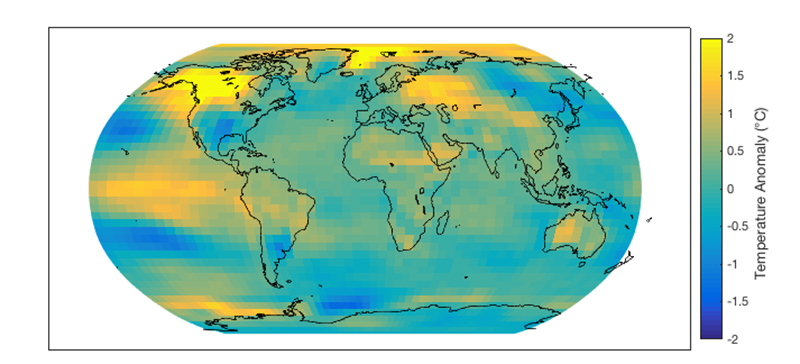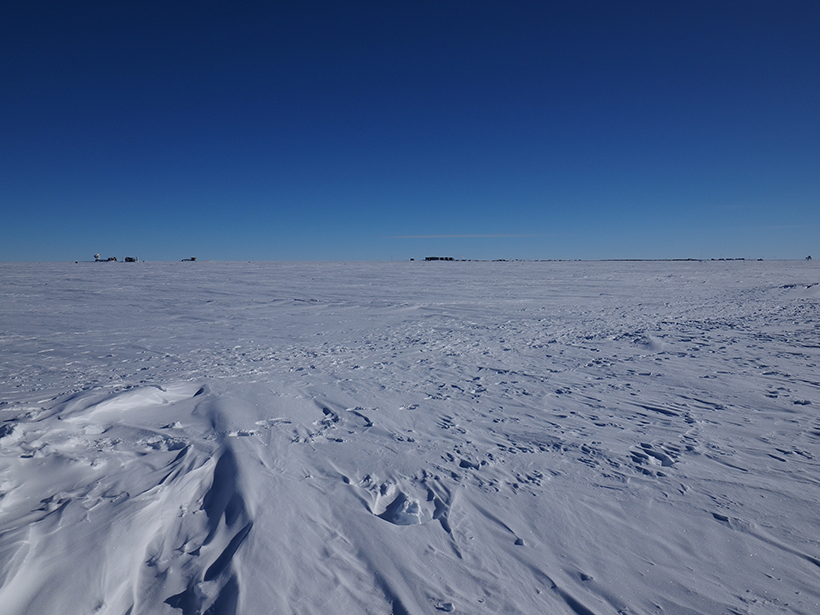Climate reanalysis is a formal method for combining the results of climate models with observations. Climate reanalysis products are fundamental for studies of climate variability and change, but most such products are limited to the 20th and 21st centuries. Incorporation of proxy climate data—e.g., from ice and sediment cores, tree rings, and corals—into paleoclimate data assimilation has tremendous potential, allowing for the development of gridded climate reanalysis products over thousands of years.
Last year, the Last Millennium Reanalysis project organized the second of three scheduled workshops aimed at improving methods and promoting strategies for paleoclimate reanalysis. This workshop focused on the incorporation of stable isotope records in paleoclimate data assimilation.
Data assimilation uses a prior estimate of the climate state, generally taken from climate model output, and updates that prior estimate on the basis of observations, resulting in a new estimate of the climate state. For isotope ratios, one can, in principle, form the prior estimate from the output of a climate model that specifically simulates isotopes. These simulated isotopes can then be compared to real isotope records stretching back through time.
As discussed by participants at the workshop, a number of challenges exist, which fall into three general classes:
- accurate simulation of isotopes in precipitation and seawater in general circulation models (GCMs)
- development of proxy system models that quantify how isotope ratios are actually recorded in paleoclimate archives
- validation of the results against modern observations.
Several talks highlighted the problem of structural uncertainties in the simulation of isotopes in GCMs. The primary issue is not isotope physics, which is quite well established. Rather, it is that small uncertainties in the modeled climate can become amplified in simulations of past isotopes. Meeting participants also discussed progress in improving proxy system models used to translate water isotope fields into simulations of realistic paleoclimate archives, such as tree ring cellulose, carbonate in marine shells, and terrestrial cave deposits.
Small uncertainties in the modeled climate can become amplified in simulations of past isotopes.
Perhaps the greatest challenge identified at the workshop was the inadequacy of observational constraints on the modern distribution of isotopes. At present, we rely almost exclusively on the International Atomic Energy Agency’s observational program Global Network of Isotopes in Precipitation (GNIP) to validate climate model output of simulated isotopes. Yet GNIP is operated largely on an ad hoc basis, and most of the records are incomplete, relatively sparse in distribution, and entirely land based. There was widespread agreement that the research community needs to prioritize improving GNIP. Given the paucity of data over the ocean, it would be particularly useful if water stable isotope instruments were routinely included on the moored buoy arrays deployed for long-term ocean-atmosphere monitoring.
Despite these challenges, there has been significant progress in paleoclimate data assimilation, as highlighted by two workshop presentations. Recently published results, presented at the meeting by Sylvia Dee, showed that the skill of paleoclimate reanalysis can be significantly improved with the use of proxy system models. Nathan Steiger presented results from the first direct assimilation of water isotopes using a global network of ice core records and two different climate models (see Figure 1).

Many tasks remain. In addition to the importance of improving the observational network, there is also a need for longer and higher-resolution simulations of water isotopes in fully coupled GCMs. Such results will be widely used as interest in paleoclimate reanalysis methods continues to grow. The Last Millennium Reanalysis project will hold its third annual workshop in October 2017 at the National Center for Atmospheric Research.
—Eric J. Steig (email: [email protected]), Department of Earth and Space Sciences, University of Washington, Seattle; David M. Anderson, Monterey Bay Aquarium Research Institute, Moss Landing, Calif.; and Gregory J. Hakim, Department of Atmospheric Sciences, University of Washington, Seattle
Citation:
Steig, E. J.,Anderson, D. M., and Hakim, G. J. (2017), Stable isotopes in paleoclimate reanalysis, Eos, 98, https://doi.org/10.1029/2017EO082589. Published on 21 September 2017.
Text © 2017. The authors. CC BY-NC-ND 3.0
Except where otherwise noted, images are subject to copyright. Any reuse without express permission from the copyright owner is prohibited.

